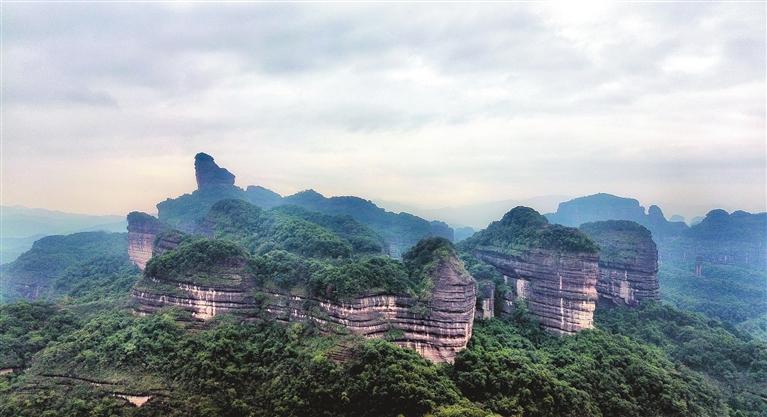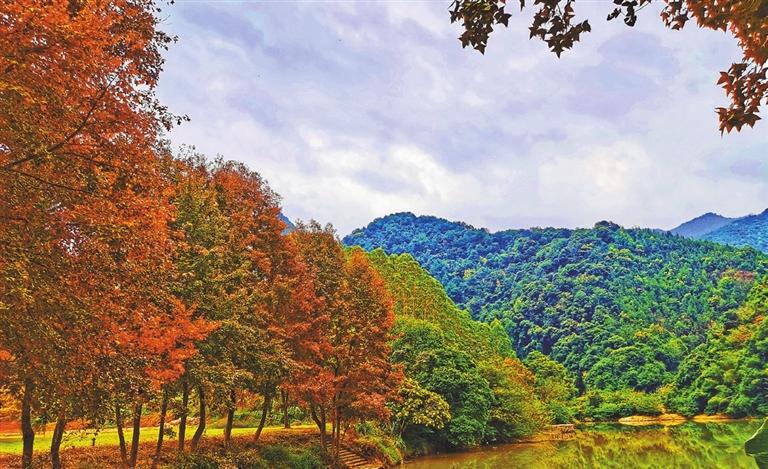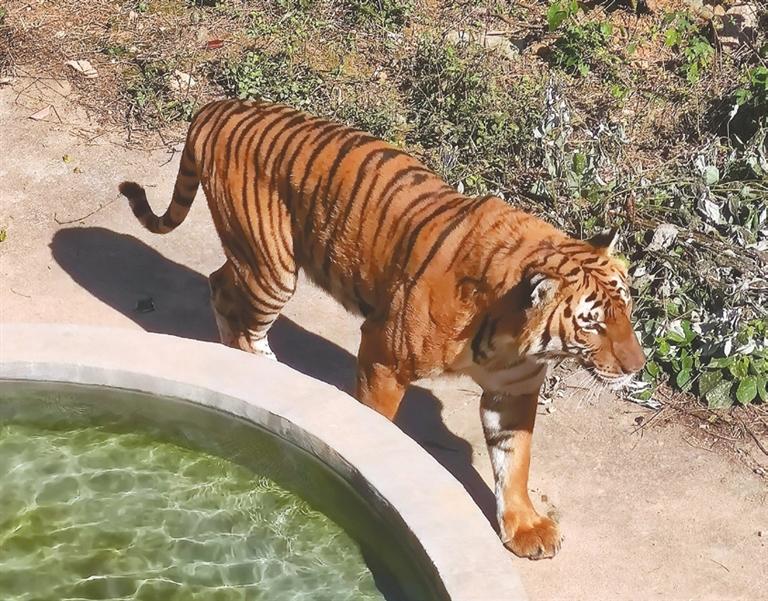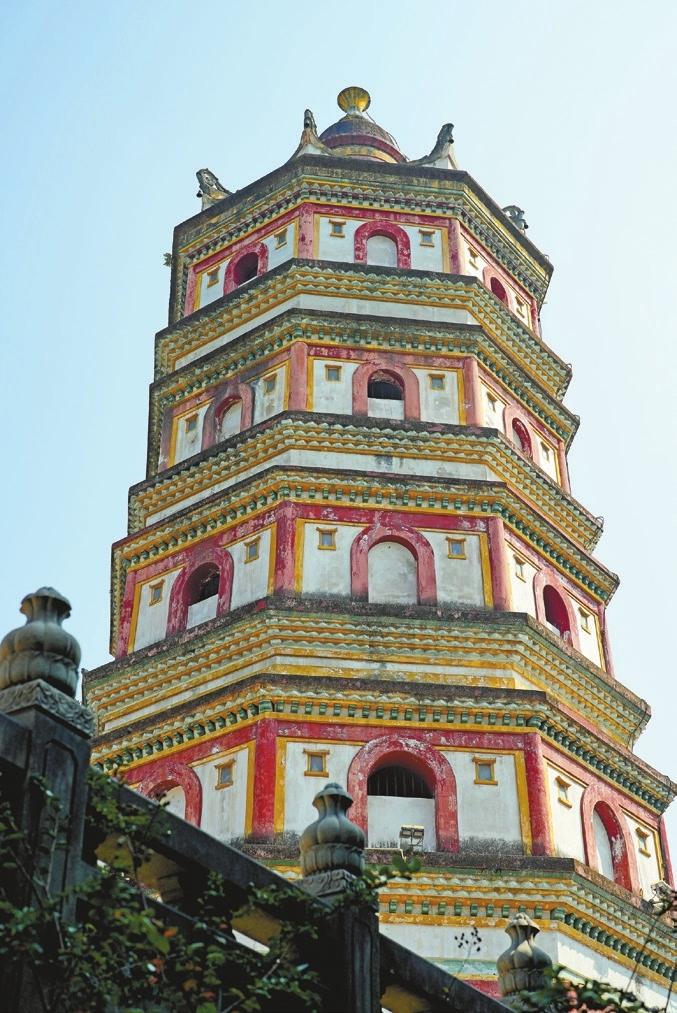



Debra Li debra_lidan@163.com THERE are plenty of natural and historical wonders to explore within our Guangdong Province, a blessing for those who crave a change of sceneries but are intimidated by air travel or the long time spent on public transport. Some four hours’ drive away from downtown Shenzhen, you will arrive in Shaoguan in northern Guangdong. With human settlements in what is today’s Maba Township as early as 129,000 years ago, the city hosts the origin of Cantonese culture with its rich customs and culinary delights. Worthy of exploring are also its natural landscapes and the history of Zen Buddhism. Lingxi River Forest Park Located in Renhua County, this park embraced by lush greenery comes with villas where urbanites can enjoy overnight stays indulging in fresh air and reminiscing about their childhood while looking at a sky full of nighttime stars. The main attraction of this season is the scene of red maple leaves in the hills, where people can ride a small train through its forest to the hilltop, walk for about 10 minutes, and then take a 1,520-meter cable car ride downhill while enjoying the breathtaking views of the valley below. A better time for visiting is in the spring and summer, when holidaymakers can camp on the large lawn at the foot of the hills, and experience the thrilling white-water rafting on the 3.5-km Lingxi River. There is also an ancient Hakka Dawei Village in the vicinity, where architecture from the Qing Dynasty (1644-1911) remains well-preserved, as are the traditional customs of honoring ancestors on special occasions with sacrifices and lion and dragon dances. Mount Danxia About 15 km away from Lingxi River lies Mount Danxia. Nicknamed the Redstone Park of China, Mount Danxia is a UNESCO Global Geopark covering a total area of 290 square kilometers. Its highest peak is Bazhai with an elevation of 619 meters. Characterized by multi-layered red sedimentary rocks of sandstone and conglomerate, the area was formed in a basin by fluvial deposition 65-140 million years ago. The warm and wet climate enhanced oxidation in the rocks and turned the color of their sediments to red. Water and rock fall further changed the terrains to create the present Danxia landform. It is geologically significant for studying the evolution of Earth’s crust. The area is also home to the evergreen broadleaf forests and endangered and new species such as Danxia viola, Danxia orchid, Danxia Firmiana and Danxia Chiritopsis. The popular tourist experiences include a 90-minute boat trip on the Jinjiang River. When taken early in the morning or at dusk during this season, passengers may be able to enjoy the dreamy sight of serene hills on both banks as a thin veil of mist floats above the river. A landmark of the geopark is a red peak named Yangyuanshi, with the Chinese name hinting at its resemblance to a giant male genital pointing up to the sky. A hike up the red peaks in this part of the park takes about two hours, but the stairs are steep and narrow at places. Tourists can also ride cable cars to the top of Zhanglaofeng Cliff as they enjoy the view of the mountains and cliffs along the way. It will take four to five hours to climb the stairs, steep at places, to the top, but promises glamorous views of sunset and sunrise. A date with South China tigers About 45 minutes’ drive from Mount Danxia and close to downtown of Shaoguan City is a zoo within the Shaoguan National Forest Park, offering a visit to peacocks, alpacas, porcupines, and other wild animals, the most precious of which is certainly the South China tiger. Back in the 1950s, there were more than 4,000 South China tigers in the country. However, the species was declared extinct in the wilderness in 2012 due to hunting and loss of their habitats. Now a national level-1 protected species, their population in captivity has grown from the original six to around 250. As the zoo in Shaoguan is undergoing an upgrade, visitors currently can only see the five adult tigers. From a watchtower, people can see these kings of the forest lazily basking under the sun, drinking water in a pool, or marking their territory by urinating. Three are kept separately, each with a bed chamber and a large courtyard leading onto the hill slope; another two, a male and a female, are kept together in the hope that they will bring new cubs into the world. These animals have a majestic look, and when they walk, every muscle bespeaks their mighty force and vigor. When construction is completed, visitors will also be able to visit five cute young tigers in their “kindergartens.” The zoo is also home to four elderly tigers. Nanhua Temple Some 24 km south of downtown Shaoguan is the Nanhua Temple, one of the best-known in China and home to a sacred whole-body relic statue of the Zen master Huineng (638-713), who is recognized as the sixth Chinese patriarch of Zen Buddhism. The temple was first built in 502 as the Baolin Temple. In 968, then Song emperor Zhao Kuangyin (927-976) gave it the name Nanhua, which has been kept ever since. The architecture we see today, covering over 12,000 square meters, was mostly built after 1934. In addition to the 80-cm-tall statue of Huineng, the temple hosts other precious relics, including 227 vivid wooden sculptures of arhats (enlightened followers of Buddha) dating to the Northern Song Dynasty (960-1127) and 133 others created in the Qing Dynasty. Hidden in the mountains and surrounded by lush greenery, the temple is also a nice place for taking a walk and meditating. | 
